Bidens leptocephala, Fewflower Beggarticks
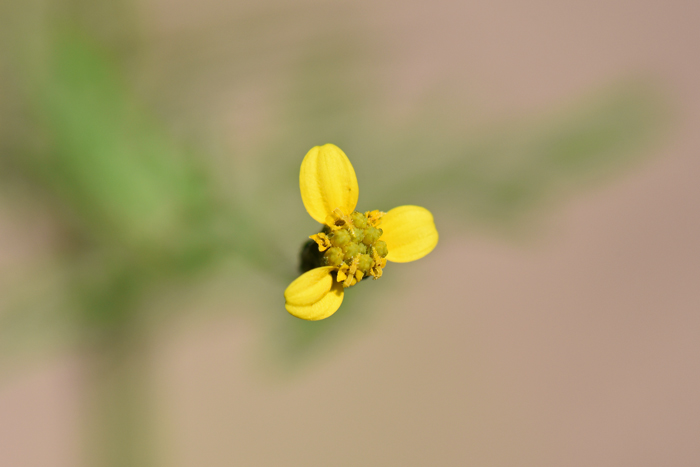
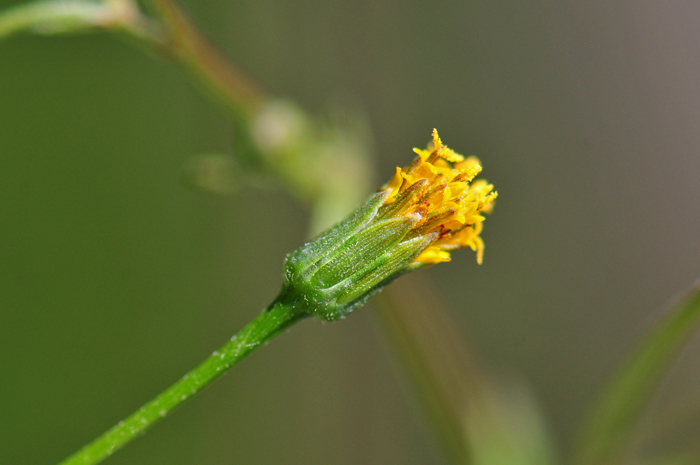
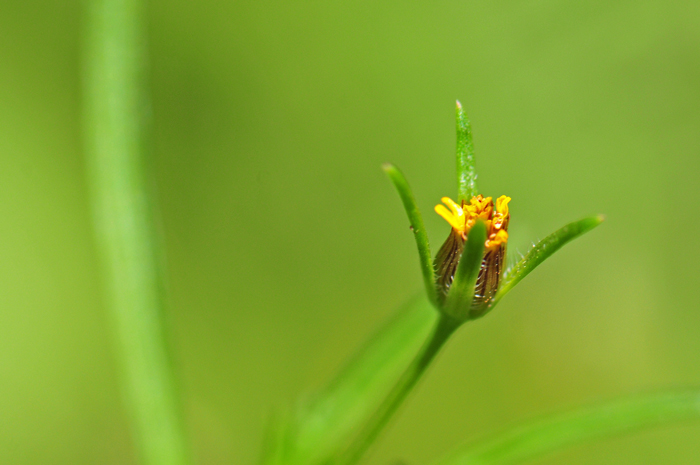
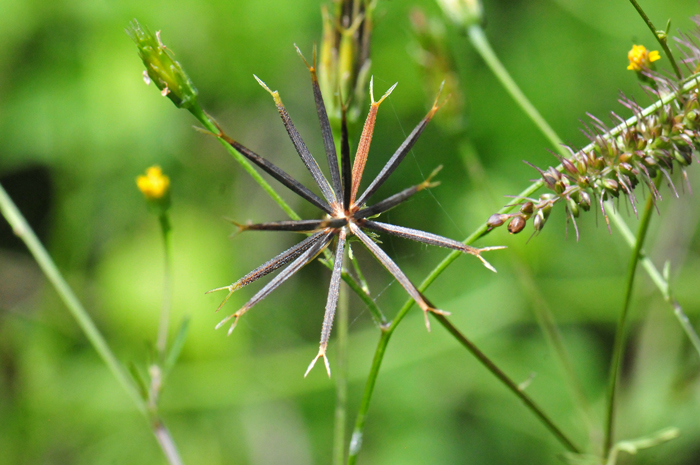
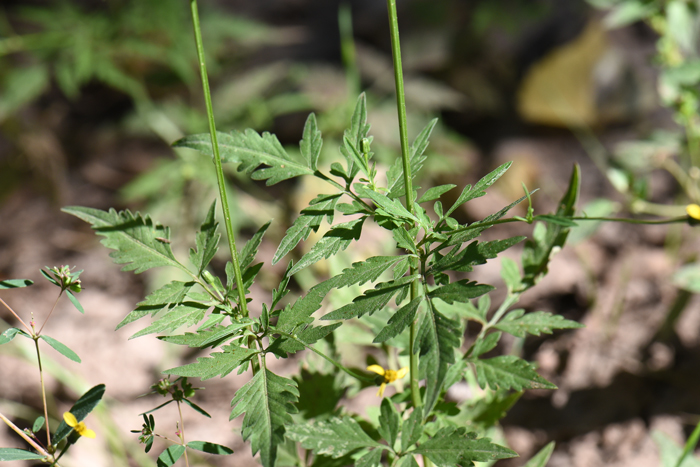
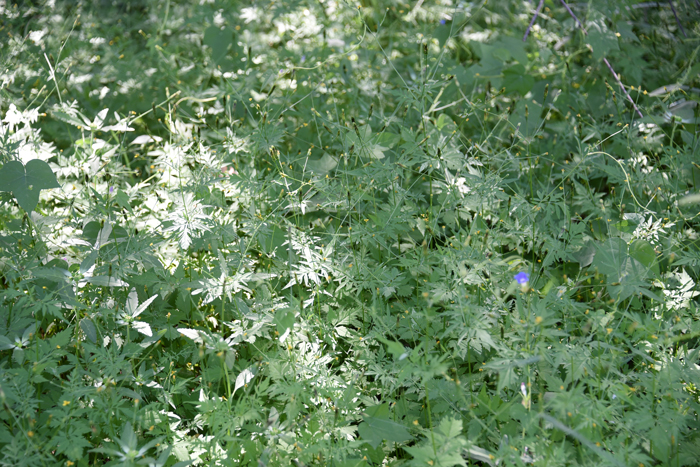
Scientific Name: Bidens leptocephala
Common Name: Fewflower Beggarticks
Also Called: Few-flower Beggarticks, Tickseed (Spanish: Saitilla)
Family: Asteraceae, Sunflower Family
Synonyms: (Bidens leptocephala var. hammerlyae, Bidens leptocephala var. leptocephala, Bidens leptocephala var. ulinei)
Status: Native
Duration: Annual
Size: Approximately 1 to 1.5 feet (30-50 cm) tall.
Growth Form: Forb/herb; erect; stems green, slender.
Leaves: Light green; opposite, with with petioles, the petiole ciliate-hispid; leaves rounded-deltate overall, 1 to 2 pinnately divided, ultimate lobes ovate or lanceolate to linear.
Flower Color: Yellow, yellowish to whitish; heads solitary or in groups of 2 or 3; heads on tips of long slender to filiform peduncles often in corymbiform arrays; heads rarely radiate, discoid; ray florets absent or 2 to 3; disk florets 5 to 13; corollas yellowish to whitish; phyllaries green, oblong to lanceolate; fruit a reddish-brown cypsela (often mistaken for an achene) linear with 2 retrorsely barbed awns or pappi on tips.
Flowering Season: August to October or September in California.
Elevation: 3,000 to 6,000 feet (900-1,800 m).
Habitat Preferences: Fewflower Beggarticks prefers mid to higher elevations, along streams, moist areas, preferring shady sandy areas.
Recorded Range: In North America, Fewflower Beggarticks is found in AZ, NM and TX near the Rio Grande River. It is also found in Baja California and northwest Mexico. In Arizona, it is found in the central, southern and northeastern parts of the state.
North America & US County Distribution Map for Bidens leptocephala.
North America species range map for Bidens leptocephala:
North American range map courtesy of Virginia Tech, Dept. of Forest Resources & Environmental Conservation
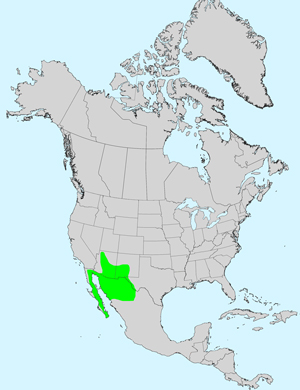
U.S. Weed Information: Unknown
Invasive/Noxious Weed Information: Unknown
Wetland Indicator: In North America Bidens leptocephala has the following wetland designations: Arid West, FAC; Great Plains, FACW; Western Mountains, Valleys, and Coast, FAC.
FAC = Facultative, occur in wetlands and non-wetlands
FACW = Facultative Wetland, usually occur in wetlands, but may occur in non-wetlands.
Threatened/Endangered Information: Unknown
The genus Bidens was published by Carl Linnaeus in 1753.
In the Southwestern United States: Arizona, New Mexico and Texas each haves 12 species of Bidens, California has 7 species, Nevada and Utah each have 4 species. All data approximate and subject to revision.
Comments: In Arizona, Fewflower Beggarticks has a narrow window of preferred habitat where it is usually associated with water or moist areas. Although it ranges well into central Arizona it is primarily a southern Arizona species with records extending into Mexico and throughout Baja California. It is well represented in New Mexico but barely reaches into Texas.
In Southwest Desert Flora also see Apache Beggarticks, Bidens aurea, Bigelow's Beggarticks, Bidens bigelovii and Smooth Beggarticks, Bidens laevis.
The specific epithet "leptocephala"is derived from the Greek root "lepto" meaning slender or thin and the Latin root "cephala" meaning head.
Bidens common names include; Beggarticks, Black Jack, Burr Marigolds, Cobbler's Pegs, Spanish Needles, Stickseeds, Tickseeds and Tickseed Sunflowers, all references to the barbed awns or pappi on the fruit.

